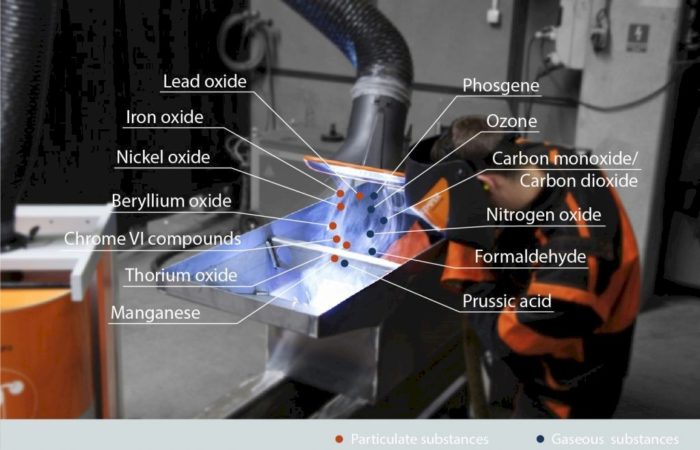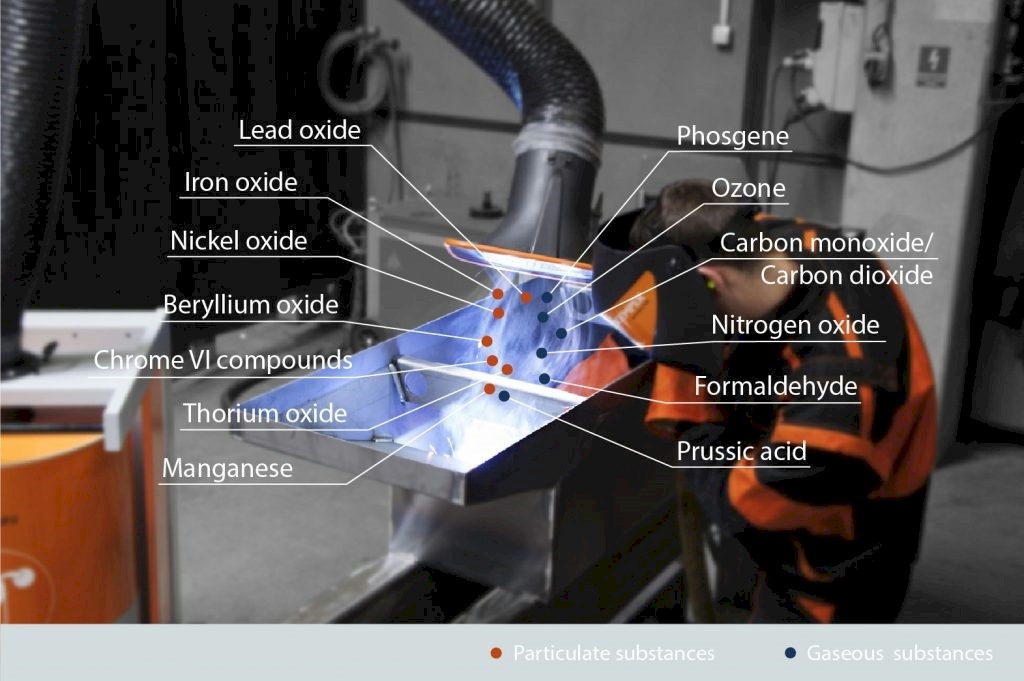The Max-Planck-Institute for Chemistry estimates that 3.3 million people die every year worldwide, due to the effects of fine dust which can be evident in welding fumes. By 2050, this number may rise to up to 6.6 million. The world health organization classes fine dust as a direct cause of lung cancer. Another study published by in Environmental Health Perspectives, looked closely at air quality in the United States. The research found that even miniscule increases in the amount of air pollution particles were linked to a 3% increase in overall deaths and an estimated 10% increase in the risk of death due to heart disease in the United States. Have you projected this for your business? The fight for the best employees may be decided by work health and safety when recruiting and retaining qualified staff. Foreign workers mainly leave the business location due to bad air, states the European Chamber of Commerce in China.
What exactly is in fine dust? In Welding Fumes?

Due to a chemical compound of a range of metals as oxide, many welders assume there are just pure gases in welding fumes. However, a range of oxides are present as particles, including:
- aluminum oxide
- iron oxide
- magnesium oxide
- lead oxide
- fluoride
- copper oxide
- manganese oxide
- molybdenum oxide
- chromium(III) compounds
- or nickel and cobalt oxides.
On the other hand,
- nitrogen oxide
- nitrogen dioxide
- carbon monoxide
- or ozone
are also present as gases in the welding fumes.
What happens when you inhale fine dust?
But what does this mean for respiration? When breathing in welding fumes, welders inhale the hazardous substances through the nose and mouth. They either reach the esophagus or windpipe. They reach the bronchial tubes and the lungs via the windpipe.
Due to their size, they are not only able to reach the smallest branches of the lungs and the alveoli, but they can also penetrate cell walls and thus reach air sacs in which the elementary gas exchange occurs between blood and lungs. Due to the fact that they reach the cells, there is a risk that the human genetic material will change and therefore trigger illnesses. As a result, welding fumes have been classified as a cause of lung cancer by the World Health Organization.
adapted from source


